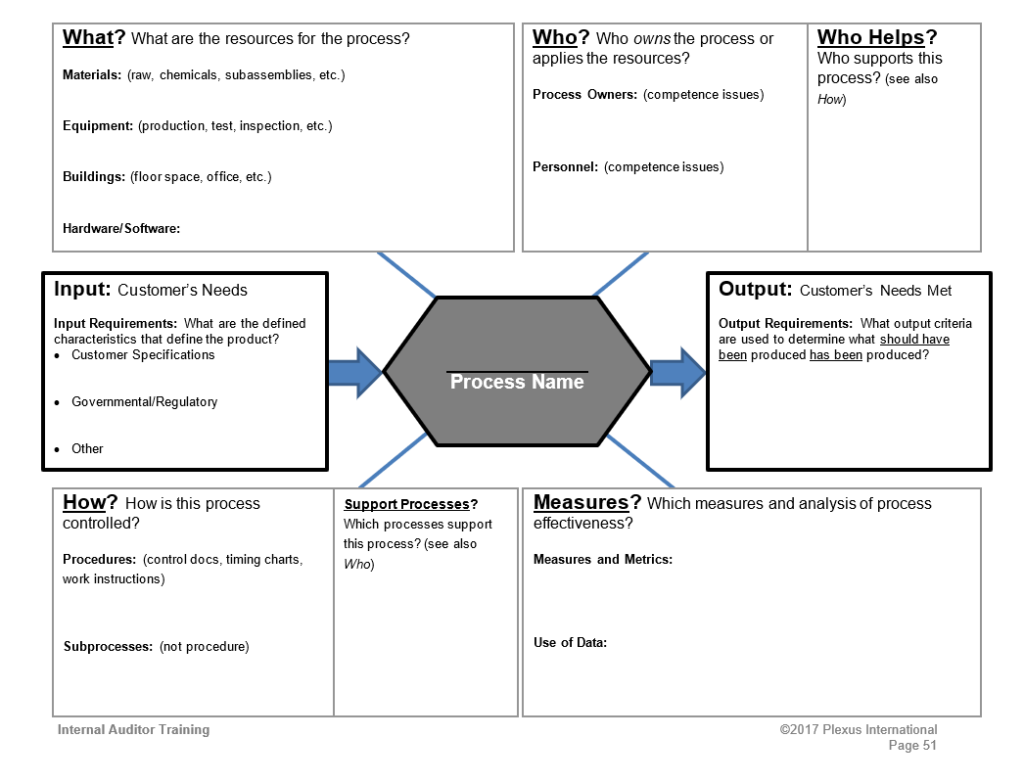As a general best practice, an auditor should prepare work documents, or tools, to help plan and guide a process-based audit. An acceptable audit tool used correctly will streamline the audit process, focusing on performance and only the value added factors. While there are no requirements for which audit work document or tools the auditor must use, to be effective the chosen tool should at minimum include the following:
Below we’ve outlined two audit tools useful for auditing management systems and processes. Although these tools are not required for conducting an audit, they’re proven to greatly increase value for all parties involved by guiding a thorough, and well-organized audit.
The turtle diagram is a tool commonly used by organizations as a proven way to define processes. It is also a useful tool for auditors conducting a management system or process audit. If used correctly in the planning process, the turtle diagram can assist the auditor to do the following:

The Turtle diagram is the framework for defining the following components of a process:
Focus on Performance
Once you’ve added a few items in each box of the turtle diagram, you’ll have a general overview of the process. Next you’ll return to the Measurement box and drill down to see how the process is performing. This drill down will take you back to many of the other boxes to investigate records to show the objective evidence of how the process is performing; focusing on Performance. If the performance of the process is good and seems well-defined and working as intended by management, stop drilling down and move to another process that does not seem to have acceptable performance.
Another recommended tool for process-based auditing is a process approach planning worksheet. The worksheet is designed to assist planning an audit by breaking the audit into practical, concrete audit paths; that is, processes that are linked together, have definable and individual characteristics attributable to processes, and actually exist. Once completed this audit map provides information for planning and conducting an audit, and allows you to decide which parts (processes) of the organization’s QMS you wish to investigate and diagnose.
Auditing quality management systems (QMS) using a product-first approach leads to better improvement of the qms and better results.
The PDCA (Plan-Do-Check-Act) cycle is an iterative process bringing management systems closer to the desired result each time the cycle is completed.
This 3-day Live Virtual Workshop is designed for new internal auditors and experienced internal auditors who require refresher training.